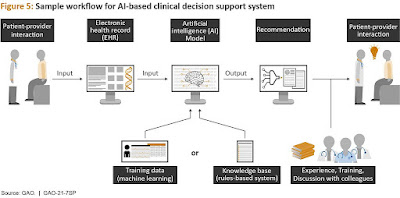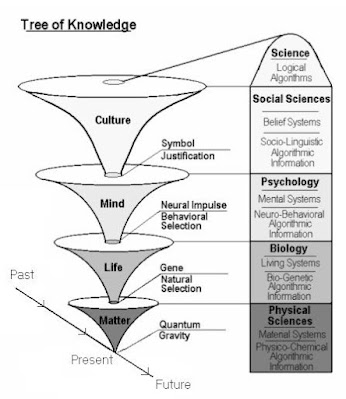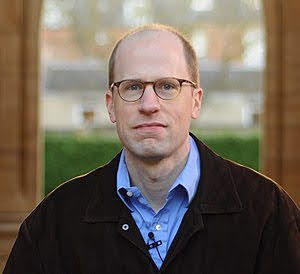The act of putting a human's memories, knowledge, and/or personality into a long-lasting digital memory storage device or robot is known as digital immortality.
Human intelligence is therefore displaced by artificial intelligence that resembles the mental pathways or imprint of the brain in certain respects.
The National Academy of Engineering has identified reverse-engineering the brain to attain substrate independence—that is, copying the thinking and feeling mind and reproducing it on a range of physical or virtual media.
Whole Brain Emulation (also known as mind uploading) is a theoretical science that assumes the mind is a dynamic process independent of the physical biology of the brain and its unique sets or patterns of atoms.
Instead, the mind is a collection of information-processing functions that can be computed.
Whole Brain Emulation is presently assumed to be based on the neural networking discipline of computer science, which has as its own ambitious objective the programming of an operating system modeled after the human brain.
Artificial neural networks (ANNs) are statistical models built from biological neural networks in artificial intelligence research.
Through connections and weighting, as well as backpropagation and parameter adjustment in algorithms and rules, ANNs may process information in a nonlinear way.
Through his online "Mind Uploading Home Page," Joe Strout, a computational neurobiology enthusiast at the Salk Institute, facilitated debate of full brain emulation in the 1990s.
Strout argued for the material origins of consciousness, claiming that evidence from damage to actual people's brains indicates to neuronal, connectionist, and chemical beginnings.
Strout shared timelines of previous and contemporary technical advancements as well as suggestions for future uploading techniques through his website.
Mind uploading proponents believe that one of two methods will eventually be used: (1) gradual copy-and-transfer of neurons by scanning the brain and simulating its underlying information states, or (2) deliberate replacement of natural neurons with more durable artificial mechanical devices or manufactured biological products.
Strout gathered information on a variety of theoretical ways for achieving the objective of mind uploading.
One is a microtome method, which involves slicing a live brain into tiny slices and scanning it with a sophisticated electron microscope.
The brain is then reconstructed in a synthetic substrate using the picture data.
Nanoreplacement involves injecting small devices into the brain to monitor the input and output of neurons.
When these minuscule robots have a complete understanding of all biological interactions, they will eventually kill the neurons and replace them.
A robot with billions of appendages that delve deep into every section of the brain, as envisioned by Carnegie Mellon University roboticist Hans Moravec, is used in a variation of this process.
In this approach, the robot creates a virtual model of every portion and function of the brain, gradually replacing it.
Everything that the physical brain used to be is eventually replaced by a simulation.
In copy-and-transfer whole brain emulation, scanning or mapping neurons is commonly considered harmful.
The live brain is plasticized or frozen before being divided into parts , scanned and simulated on a computational media.
Philosophically, the technique creates a mental clone of a person, not the person who agrees to participate in the experiment.
Only a duplicate of that individual's personal identity survives the duplicating experiment; the original person dies.
Because, as philosopher John Locke reasoned, someone who recalls thinking about something in the past is the same person as the person who performed the thinking in the first place, the copy may be thought of as the genuine person.
Alternatively, it's possible that the experiment may turn the original and copy into completely different persons, or that they will soon diverge from one another through time and experience as a result of their lack of shared history beyond the experiment.
There have been many nondestructive approaches proposed as alternatives to damaging the brain during the copy-and-transfer process.
It is hypothesized that sophisticated types of gamma-ray holography, x-ray holography, magnetic resonance imaging (MRI), biphoton interferometry, or correlation mapping using probes might be used to reconstruct function.
With 3D reconstructions of atomic-level detail, the present limit of available technology, in the form of electron microscope tomography, has reached the sub-nanometer scale.
The majority of the remaining challenges are related to the geometry of tissue specimens and tomographic equipment's so-called tilt-range restrictions.
Advanced kinds of picture recognition, as well as neurocomputer manufacturing to recreate scans as information processing components, are in the works.
Professor of Electrical and Computer Engineering Alice Parker leads the BioRC Biomimetic Real-Time Cortex Project at the University of Southern California, which focuses on reverse-engineering the brain.
Parker is now building and producing a memory and carbon nanotube brain nanocircuit for a future synthetic cortex based on statistical predictions with nanotechnology professor Chongwu Zhou and her students.
Her neuromorphic circuits are designed to mimic the complexities of human neural computations, including glial cell connections (these are nonneuronal cells that form myelin, control homeostasis, and protect and support neurons).
Members of the BioRC Project are developing systems that scale to the size of human brains.
Parker is attempting to include dendritic plasticity into these systems, which will allow them to adapt and expand as they learn.
Carver Mead, a Caltech electrical engineer who has been working on electronic models of human neurological and biological components since the 1980s, is credited with the approach's roots.
The Terasem Movement, which began in 2002, aims to educate and urge the public to embrace technical advancements that advance the science of mind uploading and integrate science, religion, and philosophy.
The Terasem Movement, the Terasem Movement Foundation, and the Terasem Movement Transreligion are all incorporated entities that operate together.
Martine Rothblatt and Bina Aspen Rothblatt, serial entrepreneurs, founded the group.
The Rothblatts are inspired by the religion of Earthseed, which may be found in Octavia Butler's 1993 novel Parable of the Sower.
"Life is intentional, death is voluntary, God is technology, and love is fundamental," according to Rothblatt's trans-religious ideas (Roy 2014).
Terasem's CyBeRev (Cybernetic Beingness Revival) project collects all available data about a person's life—their personal history, recorded memories, photographs, and so on—and stores it in a separate data file in the hopes that their personality and consciousness can be pieced together and reanimated one day by advanced software.
The Terasem Foundation-sponsored Lifenaut research retains mindfiles with biographical information on individuals for free and keeps track of corresponding DNA samples (biofiles).
Bina48, a social robot created by the foundation, demonstrates how a person's consciousness may one day be transplanted into a lifelike android.
Numenta, an artificial intelligence firm based in Silicon Valley, is aiming to reverse-engineer the human neocortex.
Jeff Hawkins (creator of the portable PalmPilot personal digital assistant), Donna Dubinsky, and Dileep George are the company's founders.
Numenta's idea of the neocortex is based on Hawkins' and Sandra Blakeslee's theory of hierarchical temporal memory, which is outlined in their book On Intelligence (2004).
Time-based learning algorithms, which are capable of storing and recalling tiny patterns in data change over time, are at the heart of Numenta's emulation technology.
Grok, a commercial tool that identifies flaws in computer servers, was created by the business.
Other applications, such as detecting anomalies in stock market trading or abnormalities in human behavior, have been provided by the business.
Carboncopies is a non-profit that funds research and cooperation to capture and preserve unique configurations of neurons and synapses carrying human memories.
Computational modeling, neuromorphic hardware, brain imaging, nanotechnology, and philosophy of mind are all areas where the organization supports research.
Randal Koene, a computational neuroscientist educated at McGill University and head scientist at neuroprosthetic company Kernel, is the organization's creator.
Dmitry Itskov, a Russian new media millionaire, donated early funding for Carbon copies.
Itskov is also the founder of the 2045 Initiative, a non-profit organization dedicated to extreme life extension.
The purpose of the 2045 Initiative is to develop high-tech methods for transferring personalities into a "advanced nonbiological carrier." Global Future 2045, a meeting aimed to developing "a new evolutionary strategy for mankind," is organized by Koene and Itskov.
Proponents of digital immortality see a wide range of practical results as a result of their efforts.
For example, in the case of death by accident or natural causes, a saved backup mind may be used to reawaken into a new body.
(It's reasonable to assume that elderly brains would seek out new bodies long before aging becomes apparent.) This is also the basis of Arthur C.
Clarke's science fiction book City of the Stars (1956), which influenced Koene's decision to pursue a career in science at the age of thirteen.
Alternatively, mankind as a whole may be able to lessen the danger of global catastrophe by uploading their thoughts to virtual reality.
Civilization might be saved on a high-tech hard drive buried deep into the planet's core, safe from hostile extraterrestrials and incredibly strong natural gamma ray bursts.
Another potential benefit is the potential for life extension over lengthy periods of interstellar travel.
For extended travels throughout space, artificial brains might be implanted into metal bodies.
This is a notion that Clarke foreshadowed in the last pages of his science fiction classic Childhood's End (1953).
It's also the response offered by Manfred Clynes and Nathan Kline in their 1960 Astronautics article "Cyborgs and Space," which includes the first mention of astronauts with physical capacities that transcend beyond conventional limitations (zero gravity, space vacuum, cosmic radiation) thanks to mechanical help.
Under real mind uploading circumstances, it may be able to simply encode and send the human mind as a signal to a neighboring exoplanet that is the greatest possibility for alien life discovery.
The hazards to humans are negligible in each situation when compared to the present threats to astronauts, which include exploding rockets, high-speed impacts with micrometeorites, and faulty suits and oxygen tanks.
Another potential benefit of digital immortality is real restorative justice and rehabilitation through criminal mind retraining.
Or, alternatively, mind uploading might enable for penalties to be administered well beyond the normal life spans of those who have committed heinous crimes.
Digital immortality has far-reaching social, philosophical, and legal ramifications.
The concept of digital immortality has long been a hallmark of science fiction.
The short story "The Tunnel Under the World" (1955) by Frederik Pohl is a widely reprinted story about chemical plant workers who are killed in a chemical plant explosion, only to be rebuilt as miniature robots and subjected to advertising campaigns and jingles over the course of a long Truman Show-like repeating day.
The Silicon Man (1991) by Charles Platt relates the tale of an FBI agent who finds a hidden operation named LifeScan.
The project has found a technique to transfer human thought patterns to a computer dubbed MAPHIS, which is headed by an old millionaire and a mutinous crew of government experts (Memory Array and Processors for Human Intelligence Storage).
MAPHIS is capable of delivering any standard stimuli, including pseudomorphs, which are simulations of other persons.
The Autoverse is introduced in Greg Egan's hard science fiction Permutation City (1994), which mimics complex miniature biospheres and virtual worlds populated by artificial living forms.
Egan refers to human consciousnesses scanned into the Autoverse as copies.
The story is inspired by John Conway's Game of Life's cellular automata, quantum ontology (the link between the quantum universe and human perceptions of reality), and what Egan refers to as dust theory.
The premise that physics and arithmetic are same, and that individuals residing in whatever mathematical, physical, and spacetime systems (and all are feasible) are essentially data, processes, and interactions, is at the core of dust theory.
This claim is similar to MIT physicist Max Tegmark's Theory of Everything, which states that "all structures that exist mathematically exist also physically," meaning that "all structures that exist mathematically exist also physically," meaning that "all structures that exist mathematically exist also physically, by which we mean that in those complex enough to contain self-aware substructures (SASs), these SASs will subjectively perceive themselves as existing in a physically'real' world" (Tegmark 1998, 1).
Hans Moravec, a roboticist at Carnegie Mellon University, makes similar assertions in his article "Simulation, Consciousness, Existence" (1998).
Tron (1982), Freejack (1992), and The 6th Day are examples of mind uploading and digital immortality in movies (2000).
Kenneth D. Miller, a theoretical neurologist at Columbia University, is a notable skeptic.
While rebuilding an active, functional mind may be achievable, connectomics researchers (those working on a wiring schematic of the whole brain and nervous system) remain millennia away from finishing their job, according to Miller.
And, he claims, connectomics is just concerned with the first layer of brain activities that must be comprehended in order to replicate the complexity of the human brain.
Others have wondered what happens to personhood in situations where individuals are no longer constrained as physical organisms.
Is identity just a series of connections between neurons in the brain? What is going to happen to markets and economic forces? Is a body required for immortality? Professor Robin Hanson of George Mason University's nonfiction publication The Age of Em: Work, Love, and Life When Robots Rule the Earth provides an economic and social viewpoint on digital immortality (2016).
Hanson's hypothetical ems are scanned emulations of genuine humans who exist in both virtual reality environments and robot bodies.
~ Jai Krishna Ponnappan
You may also want to read more about Artificial Intelligence here.
See also:
Technological Singularity.
Further Reading:
Clynes, Manfred E., and Nathan S. Kline. 1960. “Cyborgs and Space.” Astronautics 14, no. 9 (September): 26–27, 74–76.
Farnell, Ross. 2000. “Attempting Immortality: AI, A-Life, and the Posthuman in Greg Egan’s ‘Permutation City.’” Science Fiction Studies 27, no. 1: 69–91.
Global Future 2045. http://gf2045.com/.
Hanson, Robin. 2016. The Age of Em: Work, Love, and Life when Robots Rule the Earth. Oxford, UK: Oxford University Press.
Miller, Kenneth D. 2015. “Will You Ever Be Able to Upload Your Brain?” New York Times, October 10, 2015. https://www.nytimes.com/2015/10/11/opinion/sunday/will-you-ever-be-able-to-upload-your-brain.html.
Moravec, Hans. 1999. “Simulation, Consciousness, Existence.” Intercommunication 28 (Spring): 98–112.
Roy, Jessica. 2014. “The Rapture of the Nerds.” Time, April 17, 2014. https://time.com/66536/terasem-trascendence-religion-technology/.
Tegmark, Max. 1998. “Is ‘the Theory of Everything’ Merely the Ultimate Ensemble Theory?” Annals of Physics 270, no. 1 (November): 1–51.
2045 Initiative. http://2045.com/.













